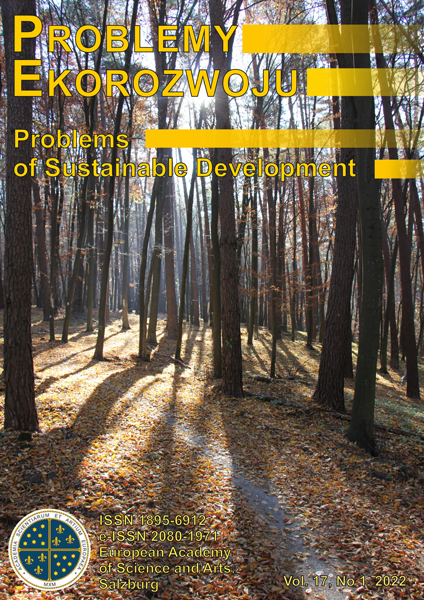Zielona energia na Karaibach: jej wpływ na turystykę i rozwój gospodarczy
Tatiana Tazikhina*, Vladimir Kvasha**, Yulia Solovova***,
Igbal Guliev****
*Financial University under the Government of Russian Federation, Department of Corporate Finance and Corporate Governance, 49, Leningradsky Prospekt, Moscow, 125993, Russian Federation
E-mail: TTazikhina@fa.ru, ORCID: 0000-0002-3763-4213
**Financial University under the Government of the Russian Federation, Yaroslavl branch, Kooperativnaya st., 12A, Yaroslavl, Yaroslavl region, 150003, Russian Federation
E-mail: VKvasha@fa.ru, ORCID: 0000-0003-2929-9010
***MGIMO University, International Institute of Energy Policy and Diplomacy, 76, Prospect Vernadskogo Moscow, 119454
E-mail: yulia.solovova@gmail.com, ORCID: 0000-0002-4555-0618
****MGIMO University, International Institute of Energy Policy and Diplomacy,Address: 76, Prospect Vernadskogo Moscow, 119454, Russian Federation
E-mail (Corresponding Author): guliyevia@bk.ru
ORCID: 0000-0002-8667-8132
Abstract
The green energy agenda has become one of the most important issues in international relations. Many island states of the Oceania have taken the course of green economy construction. The Caribbean states are in some way similar to the Oceania ones and have also made several steps towards greener future. Some of these states are tightly connected with international tourism, leading to the high dependence of their economies from touristic revenues. The article examines this interconnection, including economic component in the analysis. The major question of the article is how does (or doesn’t) tourism influence the development of green energy in the Caribbean states. The two major economies examined in the region are Cuba and Dominican Republic as the two examples of the totally different economic systems and approaches to the development of the green energy. The key findings of the article include such conclusions as the possibility of synergetic interdependence between tourism, economy and green energy and the positive effects this interdependence has. The other finding is that the Cuban method of introducing green energy is less effective than the Dominican one. The novelty of the article includes the comparison of the two economic models in the Caribbean and the development of strategies for the green energy proliferation in the countries.
Key words: Caribbean, Cuba, Dominican Republic, green energy, strategy, barriers, drivers
Streszczenie
Agenda zielonej energii stała się jedną z najważniejszych kwestii w stosunkach międzynarodowych. Wiele wyspiarskich stanów Oceanii przeszło na kurs budowy zielonej gospodarki. Państwa karaibskie są w pewien sposób podobne do krajów Oceanii i również poczyniły kilka kroków w kierunku bardziej ekologicznej przyszłości. Niektóre z tych państw są ściśle powiązane z turystyką międzynarodową, co prowadzi do silnego uzależnienia ich gospodarek od przychodów z turystyki. W artykule przeanalizowano to powiązanie, uwzględniając w analizie komponent ekonomiczny. Głównym pytaniem artykułu jest to, w jaki sposób turystyka wpływa (lub nie) na rozwój zielonej energii w krajach karaibskich. Dwie główne gospodarki badane w regionie to Kuba i Dominikana jako dwa przykłady całkowicie odmiennych systemów gospodarczych i podejść do rozwoju zielonej energii. Do kluczowych ustaleń artykułu należą takie wnioski, jak możliwość synergicznej współzależności między turystyką, gospodarką i zieloną energią oraz pozytywne skutki tej współzależności. Drugim wnioskiem jest to, że kubańska metoda wprowadzania zielonej energii jest mniej skuteczna niż dominikańska. Nowością artykułu jest porównanie dwóch modeli gospodarczych na Karaibach oraz opracowanie strategii proliferacji zielonej energii w tych krajach.
Słowa kluczowe: Karaiby, Kuba, Dominikana, zielona energia, strategia, bariery, czynniki sprawcze
Problemy Ekorozwoju 17(1)2022: 279-287
DOI: 10.35784/pe.2022.1.25
